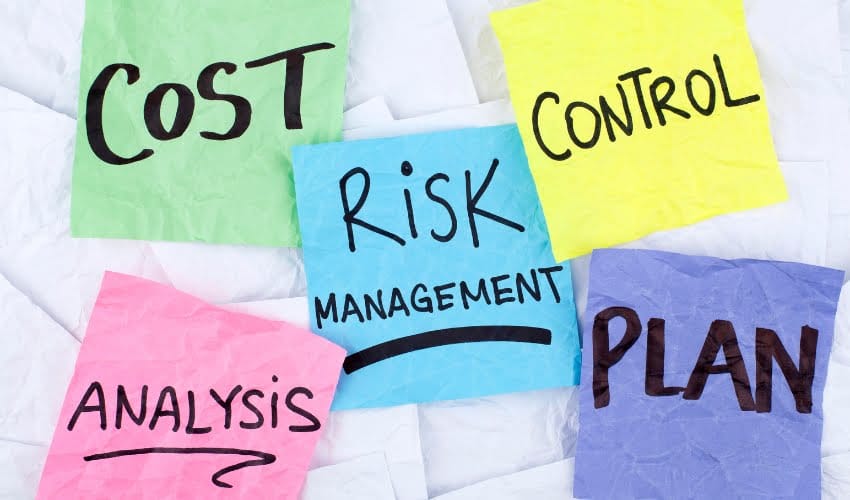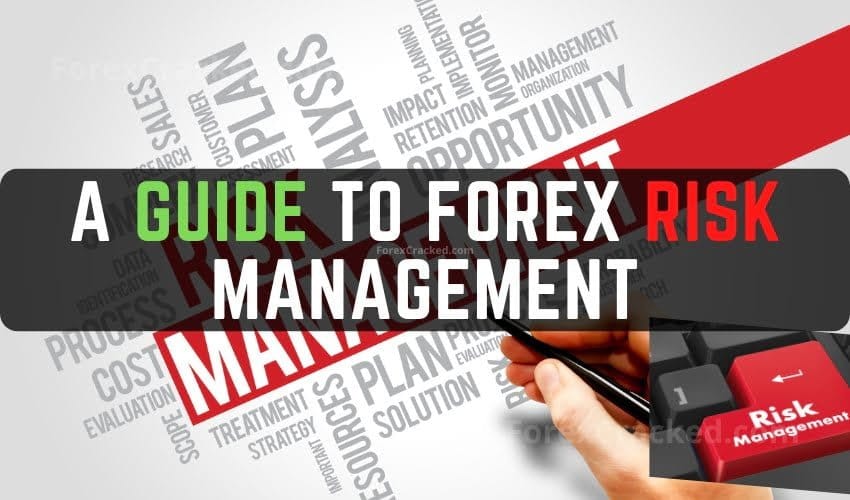Forex Trading can be a great way to make some extra money, but it’s important to remember that it is still a form of trading and therefore involves risk. In this guide, we’ll introduce you to Forex risk management and walk you through the basics of protecting your investments.
Risk management is one of the most important aspects of Forex trading. When you’re first starting, it can be difficult to know how much risk you’re comfortable taking on. That’s why it’s essential to familiarize yourself with the different types of risk and develop a risk management plan before you start trading.
In this guide, we’ll teach you about different types of risk, how to measure and control your risk exposure, and tips for staying safe while trading. So, whether you’re just getting started or looking for ways to improve your trading strategy, read on for everything you need to know about Forex risk management.
Table of Contents
What Is Forex Risk Management?
It’s important to remember that there is always some level of risk when trading Forex. No one can predict with 100% certainty which way the markets will move, and even a well-planned trade can go wrong. That’s why risk management is so important: it helps you protect your investment in case something goes wrong.
Forex risk management is simply minimizing your losses and maximizing your profits when trading Forex. There are a number of different methods you can use to do this, but the most important thing is to have a plan in place before you start trading.
That’s because risk management is all about controlling your emotions. When you’re in control, you can make rational decisions that will put you in the best position to succeed. But when you’re emotional, you’re more likely to make bad decisions that can lead to disaster.
So how do you go about managing your risk? Well, there are a number of different ways to do it, but here are a few basic money management tips:
- Set a stop loss order: This order tells your broker to sell your position automatically if it goes below a certain level. This helps protect you from losing too much money if the market moves against you.
- Know your risk tolerance: This is how much money you’re willing to lose on a single trade. Remember, Forex is a risky investment, and you should never trade more than you can afford to lose.
- Use trailing stops: This is an order that moves your stop loss level automatically as the market moves in your favor. This helps protect your profits and minimize your losses.

Assessing and Managing Risk in Forex Trading
When you’re trading Forex, the risk is always a factor. You can never completely eliminate the chance of losing money on a trade, but you can take steps to reduce that risk as much as possible. You’re trying to make trades where the potential payoff is worth the risk you’re taking on.
You need to calculate the amount of risk and be aware of how much of a risk you’re taking on with every trade so that you can make informed decisions. And once you’ve made a decision, you need to have a plan for managing that risk.
One way to do this is to assess your risk ahead of time. What’s the maximum amount you’re willing to lose on a single trade? How many trades are you willing to lose in a row before you call it quits? These are important questions to ask yourself, and they’ll help you establish your risk parameters.
Once you’ve established your risk parameters, it’s important to manage them closely. This means using stops and limits to enforce those parameters and only risking the amount of money you’re comfortable losing. It also means being aware of market conditions and being prepared to cut losses if necessary.
That means having stop losses in place and knowing when to cut your losses and walk away from a trade. It also means diversifying your portfolio, so you’re not putting all your eggs in one basket.
Risk management is one of the most important aspects of Forex trading. It’s what separates successful traders from those who lose money. By assessing and managing your risk, you can trade confidently and reduce the chances of experiencing a negative trading event.
Top 5 Fundamentals of Forex Risk Management
In this section, we’ll go over the top 5 fundamentals of Forex risk management. These concepts will help you understand how to protect your trading account and manage your risk exposure.
- Always use a stop-loss order: This is probably the most important rule of risk management. A stop-loss order is an automatic order to sell a security when it reaches a specific price, preventing you from losing too much money on a single trade.
- Limit your position size: Don’t put all your eggs in one basket. Spread out your risk by limiting your position size on each trade.
- Diversify your portfolio: Don’t put all your money into one currency pair. Diversify your portfolio by trading different currency pairs and other financial instruments.
- Use limit orders: Use limit orders to enter and exit trades instead of market orders. This will help you control risk and avoid getting taken out of a trade at the wrong time.
- Know your risk tolerance: This is perhaps the most important factor in Forex risk management. Know what percentage of your account you’re prepared to lose on any given trade and stick to it

A few extra tips are not to overtrade and have a trading plan before starting trading. A trading plan helps you make rational decisions while trading and can help reduce emotional trading mistakes.
Types of Risks in the Forex Market
Risk management is a key part of successful forex trading, and there are different types of risks you should be aware of. The most common are market risk, counterparty risk, liquidity risk, and political risk.
Market risk is the risk that the price of a currency pair or instrument will move in an unfavorable way for your trading position. Counterparty risk is the potential for losses due to the unreliable actions of another party involved in your transaction. Liquidity risk is the possibility that a market suddenly becomes illiquid, reducing your ability to enter or exit a trade at favorable prices. And finally, political risks can affect a country’s ability to buy and sell currency, which could have a dramatic effect on exchange rates.
By understanding these risks, you can develop robust strategies for managing them. That way, you can keep your trading profits secure—and protect yourself from any potential losses!
Strategies for Risk Management in Forex Trading
Now that you understand the basics of FX risk management, let’s look at some practical strategies you can use to manage your risks. The first step is to set yourself a maximum amount of money to be invested in one trade. This amount is called the risk capital, and it serves as a limit to how much money you can afford to lose in a single trade.
The next step is to set rules for when you will enter and exit a trade. This will help ensure consistency in your trading and minimize losses if the market does not move in your favor. Additionally, setting stop-loss orders will minimize losses by closing out trades at predetermined points.
You should also set a predetermined profit target for each trade you make, which helps ensure that you accomplish something positive from every trade, regardless of whether the market moves in your favor. Finally, diversifying your portfolio by trading multiple currencies simultaneously will help spread out your risk and capitalize on opportunities across different markets.
- Set realistic expectations: Don’t expect to make a million dollars overnight. Invest carefully and have a plan for your decisions.
- Use stop-loss orders: These will limit losses if the market moves against you and help you minimize your losses should they occur.
- Trade only with money you can afford to lose: Don’t take unnecessary risks by investing money intended for other uses, such as rent or bills.
- Monitor your trades: Keep up with market conditions and regularly monitor your positions to ensure they remain in line with your strategy and goals.
- Diversify: Don’t put all of your eggs into one basket by investing in just one asset or currency pair. Diversifying your investments helps reduce overall risk by reducing any single point of failure in your portfolio.
- Make use of leverage wisely: Leverage magnifies profits but also increases losses, so use it wisely and conservatively when possible.
Using Automated Risk Management Tools for Forex Trading
One of the most effective ways to manage risk when trading Forex is to use automated risk management tools. These tools are designed to help you set stop losses and take profits, as well as track your overall profitability.
Many of these tools come in the form of a software application or web-based service that reviews your trades and advises on managing risk better. They can also be programmed with certain criteria that you include to ensure that your trading strategies remain within safe parameters.
For example, if you’re looking for the protection of a stop loss, you can use an automated tool to set a stop loss order at a specific price level. This means you won’t have to place it yourself each time you enter a trade manually. Instead, it’s done instantly by your automated tool.
Using automated tools for Forex risk management is an easy way to protect yourself from major losses and stay on top of your trading performance.
Key Takeaways on Forex Risk Management
Now that we have a good understanding of what Forex risk management is, let’s break down the key takeaways to keep in mind when trading:
- Understand the risks and rewards associated with each position you take in the market.
- Set a risk management strategy and stick to it—this should include both entry and exit points as well as a maximum amount of capital you are willing to risk on any single trade.
- Monitor your progress and make sure you are sticking to your risk management strategy.
- Avoid emotional trading; stay disciplined and focused on the markets.
- Don’t forget to factor in volatility; use tools such as stop-loss orders to manage risk.
By following these steps, you can ensure that your trading is conducted according to a premeditated strategy that safeguards your capital from unnecessary risk. As with anything, practice makes perfect—so get out there and start honing your skills!
Conclusion
Forex trading can be profitable if done correctly. However, there are risks involved when trading in the foreign exchange market. That’s why it’s essential to learn about forex risk management and how to protect yourself while trading.
In this guide, we covered the basics of forex risk management. We talked about how to identify and manage your risk, how to use stop losses and take profits, and how to use position sizing to control your risk.
Forex trading can be profitable if you take the time to learn about forex risk management and use it correctly in your trading.



[…] a fixed stop loss (SL) on every trade to curtail potential losses, an essential component of risk management in trading. Importantly, it avoids high-risk strategies such as martingale and hedging, which can be […]